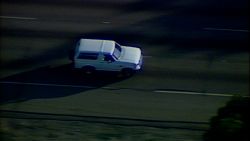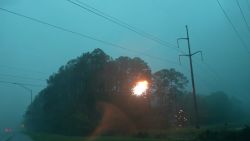Los Angeles County recorded its highest-ever temperature Sunday as the weekend heat fanned wildfires across California and put additional strain on the state’s power network.
The record temperature was at Woodland Hills, according to Dave Bruno, senior meteorologist for the National Weather Service.
“We reached 121 degrees (F) in Woodland Hills, California. That is the highest-ever temperature at a station, beating 119 degrees on July 22, 2006,” Bruno told CNN Sunday.
The temperature is also the highest recorded in the Los Angeles County warning area, which includes Ventura, Santa Barbara and San Luis Obispo Counties, a tweet from the National Weather Service Los Angeles said Sunday.
“Woodland Hills is the last place to get the effects of sea breeze. It’s tucked in the west corner of the San Fernando Valley,” Bruno explained. “This record heat was in a perfect or imperfect situation. High temperatures from surface to atmosphere, weak offshore flow and just enough to keep away the sea breeze.”
The NWS said in a statement that the temperature at Woodland Hills could increase and “many other records around the region will be broken today.”
The high temperatures come as firefighters battle wildfires around the state – the worst year on record in terms of the amount of land scorched.
More than 2,094,955 acres have burned so far, Cal Fire Capt. Richard Cordova said Sunday.
Gov. Gavin Newsom declared a state of emergency ahead of the heat forecast this weekend, with the goal of alleviating heat-induced demands on the power grid. An alert was issued to California residents to conserve power between 3 and 10 p.m., when demand is highest.
Sunday, the US Department of Energy (DOE) said it was exercising emergency federal powers in California as the state’s electrical grid is strained by the high heat and damage from wildfires.
In a news release from the department, Secretary of Energy Dan Brouillette agreed with state electrical operators that a “grid reliability emergency exists which demands immediate federal intervention.”
But the statement also questioned why the grid was struggling to cope.
“While the Secretary has offered this emergency assistance to California in this time of crisis, he also encourages state policymakers to evaluate why the grid is not able to handle extreme stress, which could be alleviated with the support of greater baseload power generation and natural gas supply,” the statement read.
The emergency powers allow the DOE to adjust electricity production and distribution during the crisis.



















